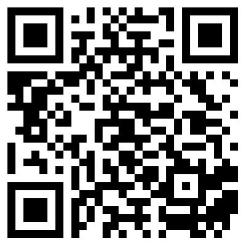The children we teach are constantly surrounded by technology. They are used to finding out instantly what they want to know at the touch of a button, as most of them will have a smart phone or tablet to hand. QR (quick response) codes can be used effectively to engage pupils, who may prefer to engage with their phones and social media as opposed to their work, especially for homework.
Some teachers may find the idea of introducing QR codes into their teaching as daunting, or perhaps even unnecessary, but when you consider how easy they are to generate, combined with the high interest from pupils that they generate, I would recommend their implementation as a fantastic way of increasing engagement in learning.
What are QR codes?
A QR code is like a bar code and it contains information. You can easily generate your own to show information you want them to see. When they are scanned by someone (a pupil) that information will be displayed to them.
How QR codes can be used:
There are plenty of websites that allow you to create your own QR codes. I use http://goqr.me/ but there are many other alternatives.
I tend to use QR codes in two ways: to take a pupil to a website and to display a piece of text.
You can add printed QR codes to your displays to link to class blogs or additional information. Additionally, they can be used as a way of increasing engagement and communication with parents by displaying QR links to topics being studied in class. You could send home printed QR codes of these topics to parents if your classroom environment or school routines (e.g. maybe parents don’t wait by the classroom to collect their child) prevent you being able to display the QR codes in a place easily accessible to parents.
QR codes in lessons:
If you are fortunate enough to have access to a class set of iPads or tablets, or your school allows pupils to use their own devices, then a simple QR scanner app would mean that you could introduce QR codes into your lessons, instantly making them seem more appealing to pupils. You could be setting what could be seen by many as a fairly mundane task, e.g. answering questions, but the technology element would elevate its interest to your pupils.
You may have heard of QR treasure hunts, where pupils answer questions from QR codes around the school. Websites like this: http://www.classtools.net/QR/ make a QR treasure hunt an easy lesson to organise. The most time-consuming element would probably be putting the QR codes up around the school! Adding a small incentive for completing the task first, (e.g. house points, raffle tickets or something that fits in with your own school’s behaviour system) you may find that pupils who would normally struggle to complete tasks, will be more successful in this activity due to its competitive nature and the added element of moving around the school.
QR codes for homework:
You can use QR codes in a similar way to how you would in a lesson. One way would be to give them a sheet with printed QR codes that lead to questions being displayed. They then bring their answers back to school or write them on an answer sheet that you provide them with.
I find that pupils are much more likely to visit a website that I provide to them in the form of a QR code, than as a URL. You avoid typos this way and the time spent in accessing the homework is reduced (something that will also appeal to your pupils!).
Sometimes I produce a sheet of QR codes that lead to additional websites that aren’t necessary to complete the task but are related to the topic we are learning about. I find pupils are more likely to engage with this additional information when they can scan it on their smart phone and browse at their leisure than if I give them a list of websites. If you provide a list of websites, pupils will have an idea from the URL what it is you are asking them to access. However, if you provide a sheet of QR codes with no additional information about where they lead, they will be far more likely to visit all of them, therefore engaging with far more material than they might initially choose to.
Flipped or blended learning
If you are in an environment where you are able ‘flip the classroom’ (supportive parents, engaged children, home access to internet etc.), you may find the use of QR codes a useful tool.
You could generate QR codes that link to videos, photographs, websites or texts and if not providing a hard copy of these to your pupils, you could always add the QR codes to your school’s VLE (if you have one) so that they are stored for future use.
